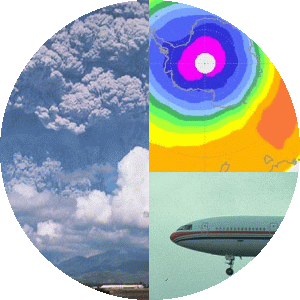 > ENC Master > Climate Encyclopaedia > Upper Atmosphere > basics
> ENC Master > Climate Encyclopaedia > Upper Atmosphere > basics
 |
|
|
|
Higher AtmosphereBasics |
The higher atmosphere and stratospheric processesAbove the clouds the air becomes very thin and dry. There are still a few hundred kilometres of atmospheric room containing air molecules before we really reach space, but we already have more than 80% of the air mass below us if we enter the stratosphere.
|
|
Few chemical compounds make it up to such altitudes and the tropopause traps most of them. However these layers are of some importance for life on Earth, since they hold back the highly energetic part of the sunlight, which would cause major damages if reaching the Earth. The stratosphere, including the ozone layer, is the lowest and most prominent layer of the higher atmosphere. 1. Basic understanding and observation of the mid atmosphere- Layers of the atmosphere and changes in meteorological parameters
|
2. Ozone hole and chlorofluorocarbons- Ozone: formation, absorption and the ozone layer
|
|
About this page:author: Dr. Elmar Uherek, Max Planck Institute for Chemistry, Mainz
|

